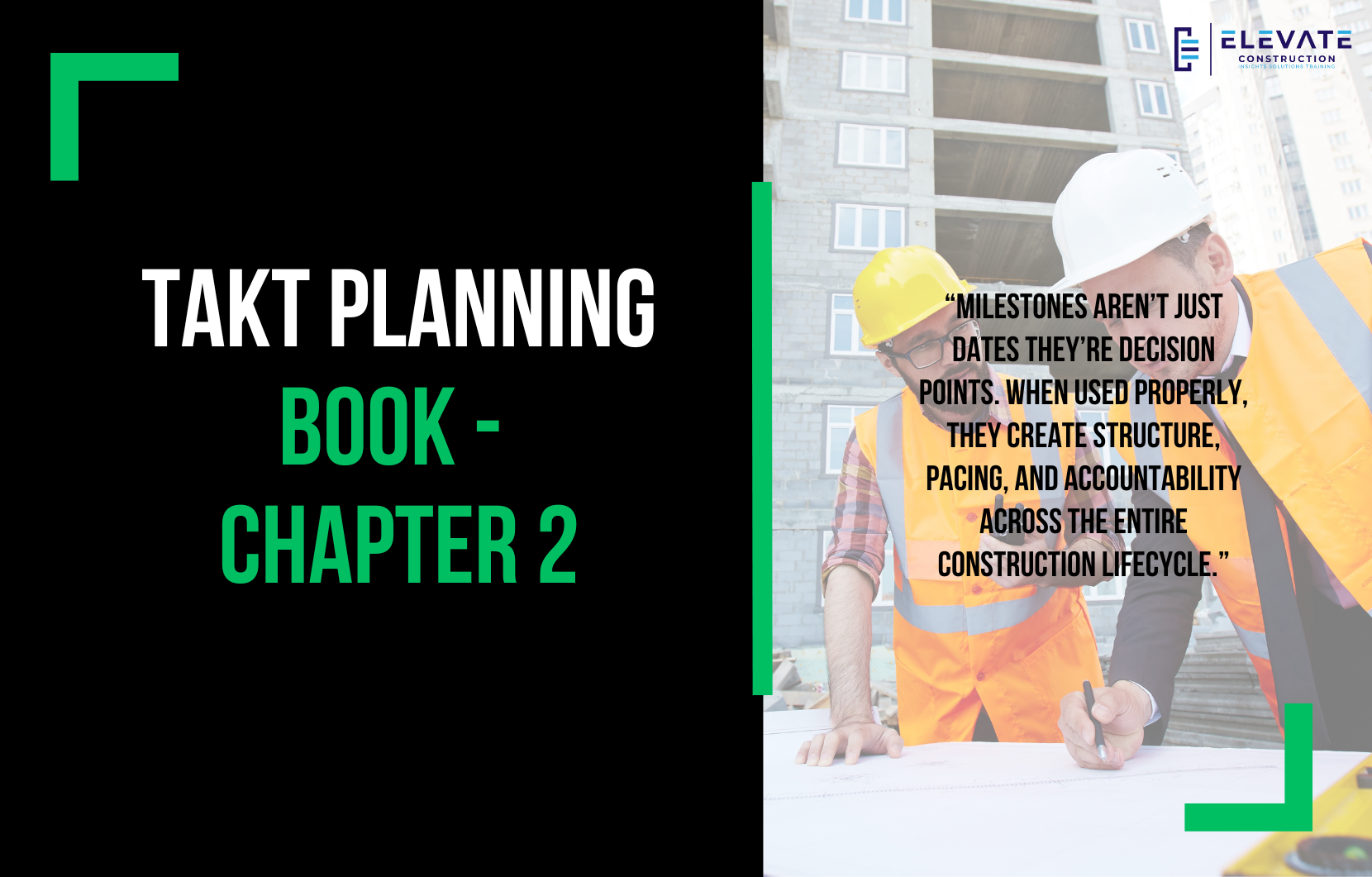Mastering Milestones in Construction Projects
I’m currently writing from Atlanta, Georgia, after a great session presenting the Integrated Production Control System which includes First Planner, TAKT, and Last Planner. It’s a great time to dive into Chapter 2 of the TAKT Planning Book, especially as I’ve just been walking teams through its application.
Before we jump into the topic, I want to take a moment to share some listener feedback that really meant a lot:
“Happy belated Turkey Day, Jason. I’m watching your TAKT simulation series and wanted to let you know that you’ve taken Jason’s training workshop from Germany and made a master class in terms of explaining it from a US perspective. Excellent work, sir.”
That comment was right on time. We’ve made Jason’s simulation available for purchase, complete with the board, the Canva guide, and video walkthroughs. It’s a powerful learning tool.
A Quick Note on CPM
Before we go deeper into milestones, I want to share a note I’ve had sitting on my desk for a while:
“CPM is like intentionally packing a freeway full to capacity, calling the cars a critical path, and expecting no delays.”
Let’s face it our industry can’t evolve into lean thinking if we keep clinging to destructive management methods like traditional CPM.
Understanding Milestones in TAKT Planning
This chapter in the TAKT Planning Book focuses on identifying project milestones. While it may seem simple, it’s one of the most misunderstood steps in construction scheduling.
What Are Milestones?
Milestones represent the start and stop points of project phases. These are not arbitrary checkpoints they’re essential for triggering work and aligning project timelines. Each milestone should be buffered to absorb variation and prevent cascading delays.
Every project should include the following key milestones:
- Notice to Proceed (NTP)
This is your true construction start milestone. While you may have design milestones such as concept, schematic, or DDs (design development), NTP is the trigger for field operations.
- On Third Milestone
This isn’t necessarily at the exact 33% mark, but rather a milestone around or near the one-third point of the overall project. It should tie to a major phase and serve as a useful progress benchmark.
- Two Thirds Milestone
Similar to the one-third point, this marks a significant progress threshold and should also be attached to a meaningful phase in the project. These intermediate milestones help validate your pacing and buffer use.
- Substantial Completion
This one’s often misunderstood. Substantial completion means the building is ready for occupancy. That includes:
- Fire life safety systems complete
- Elevator inspections done
- All egress routes clear
- Punch list issued
- Internet, permanent power, and controls operational
- Green tag inspections passed
This is more than just finishing physical work it’s a holistic milestone of readiness.
- Final Completion (DDFD – Done Done Freaking Done)
This occurs after the punch list is resolved and the owner/architect sign off. Typically a few weeks to a couple of months after substantial completion.
- Financial Completion
This is one I strongly recommend adding. Why? Because teams often say, “We got an extension, so we’re good.” But if you’re not being paid for general conditions or additional labor, you’re not good.
Tracking financial completion gives visibility into the cost impact of timeline shifts. If your project moves beyond this milestone, you’re bleeding money even if the owner grants more time.
Two Ways to Build a TAKT Plan
When creating a TAKT plan, you can approach it in two ways:
- Given Milestones Approach
Start with your start and end milestones provided by the owner. Then design your TAKT plan to fit within those parameters, using buffers, zone optimization, and risk analysis. - Historical Data Approach
Start with a known start date, plan what’s realistically possible based on past experience, and propose a finish date. Again, validate using reference class forecasting and buffers.
In either case, you’ll need to define:
- Design milestones
- NTP
- Substantial Completion
- Final Completion
- Financial Completion
- Intermediate milestones (added during phase planning)
Wrapping up Chapter 2
This chapter might be short, but its impact is massive. A solid foundation of milestones informs every phase, train, and task in your TAKT plan. If you skip or mislabel these, your entire system will wobble.
So take the time to get this step right and build from a place of clarity.
Key Takeaway
Milestones aren’t just dates they’re decision points. When used properly, they create structure, pacing, and accountability across the entire construction lifecycle. Add financial completion to your tracking, and don’t build a TAKT plan without defining these anchors first.
If you want to learn more we have:
-Takt Virtual Training: (Click here)
-Check out our Youtube channel for more info: (Click here)
-Listen to the Elevate Construction podcast: (Click here)
-Check out our training programs and certifications: (Click here)
-The Takt Book: (Click here)
Discover Jason’s Expertise:
Meet Jason Schroeder, the driving force behind Elevate Construction IST. As the company’s owner and principal consultant, he’s dedicated to taking construction to new heights. With a wealth of industry experience, he’s crafted the Field Engineer Boot Camp and Superintendent Boot Camp – intensive training programs engineered to cultivate top-tier leaders capable of steering their teams towards success. Jason’s vision? To expand his training initiatives across the nation, empowering construction firms to soar to unprecedented levels of excellence.
On we go

